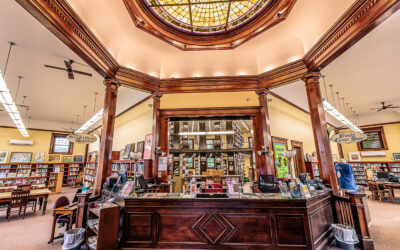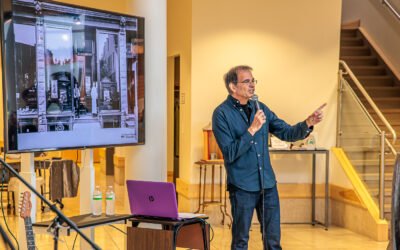The Hackley and Hume Historic homes in Muskegon capture a moment in time when timber was king in Michigan.
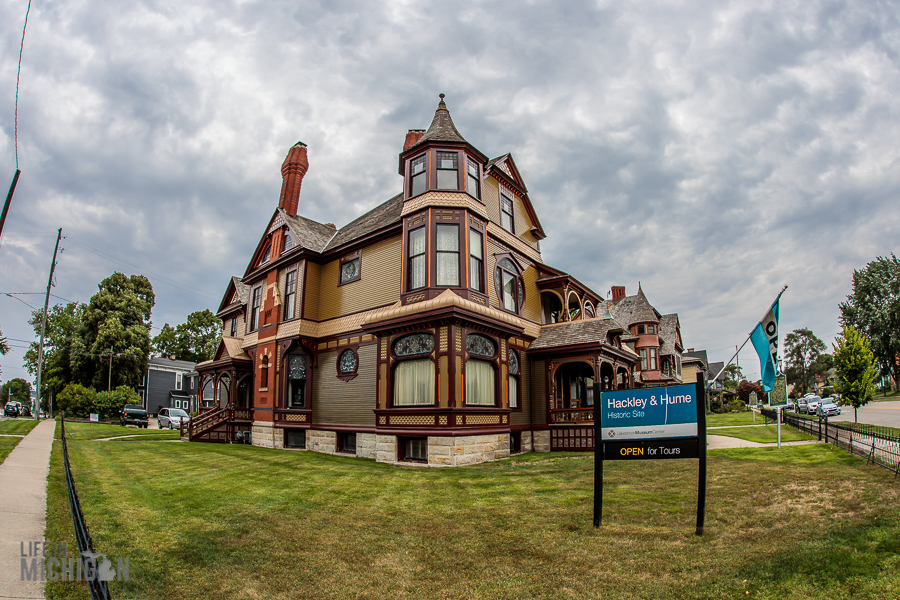
Hackley and Hume Historic Homes – A land of plenty
There was a time when Michigan was covered in trees. The Muskegon area was home to white, red, and jack pines soared toward the heavens. Trees over 200 years old, 200 feet tall, and 5 feet in diameter ruled the land. The lumber business roared into life in the 1830s and hit its peak by 1890 in lower Michigan. 5.5 billion board feet of lumber was produced in Michigan between 1889 and 1890. This was more than any other state in the country. The great forests of Michigan created more millionaires than the California gold rush.
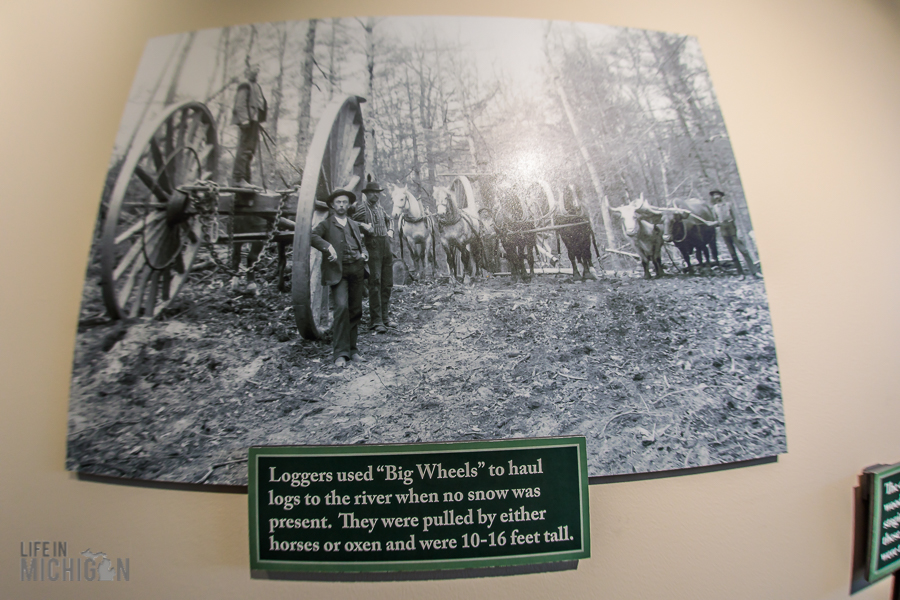
You can learn these facts and more when you visit the Hackley and Hume Historic homes in Muskegon. Located at 484 W. Webster in downtown Muskegon, these homes and the “city barn” are architectural delights and a beacon into the past when the lumber business created fantastic wealth.

During our trip out to Muskegon to enjoy the Burning Foot Beer festival, we set aside some time to visit these fine homes. The Lakeshore Museum Center has done an amazing job of restoring these homes. They offer guided tours of the houses which provides more information that can fit inside your brain in one hour. Ok, the information will fit in your brain, but it feels like a lot when you are on the tour.
Who are Hackley and Hume
Charles Henry Hackley came to Muskegon in 1856 with his father. Starting off as a laborer, Mr. Hackley worked his way up to foreman and eventually bookkeeper of a mill in Muskegon. In 1859, Hackley partnered with his father and Mr. Gideon Truesdell to purchase a mill that failed. This launched Hackley on a path of becoming a business owner or partner in several mills and expanding his knowledge of the lumber business. He eventually partnered with Thomas Hume to form the Hackley and Hume Company. Hackley and Hume would become one of largest lumber firm in the country.

Thomas Hume had migrated from Ireland to Muskegon in 1872. He became a bookkeeper for C.H. Hackley and Company. After demonstrating his skills he quickly rose within the company. When Mr. Hackley’s brother Edwin died, Thomas bought into the company. The new company of Hackley and Hume Company was born in 1881. Their lumber business would continue to prosper until 1894. By this time, much of the lumber in Michigan was gone.
Exploring the City Barn
As we waited for the next tour, we explored the city barn where you’ll find old pictures of Michigan’s logging heyday and many interesting facts about what those times were like. I was particularly blown away by the sheer size of some of the trees shown in the pictures.
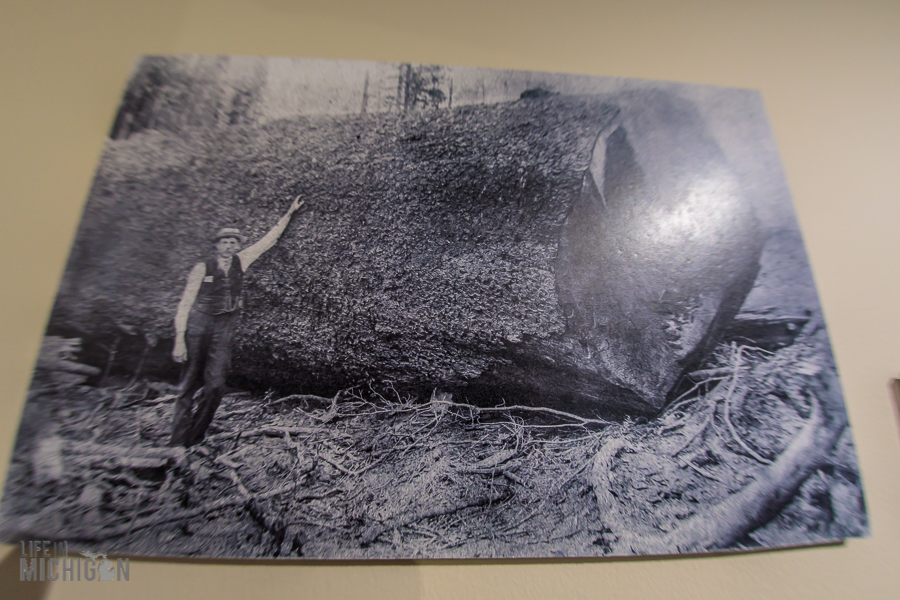
In the city barn you can see the apartment where the Hackley’s coachman Travis Bullis lived. He stayed with the families until 1905 when he married and moved to a house in town. You can also view one of the coaches that the family would have used at that time to get around town.

Touring the Hackley and Hume Homes
We met our guide at the City Barn and then she took us first to the Hackley House. Walking into the home was like walking into the past. From floor to ceiling, this home is marvelously detailed and ornate. I have no doubt you could spend hours looking at the beautiful carvings which adorn ever post, rack, drawer, and beam. When you consider this is all hand-carved, it makes the level of craftsmanship and artistry that much more impressive to behold. I’m pretty sure, I spent most of the tour in slack-jawed wonder.
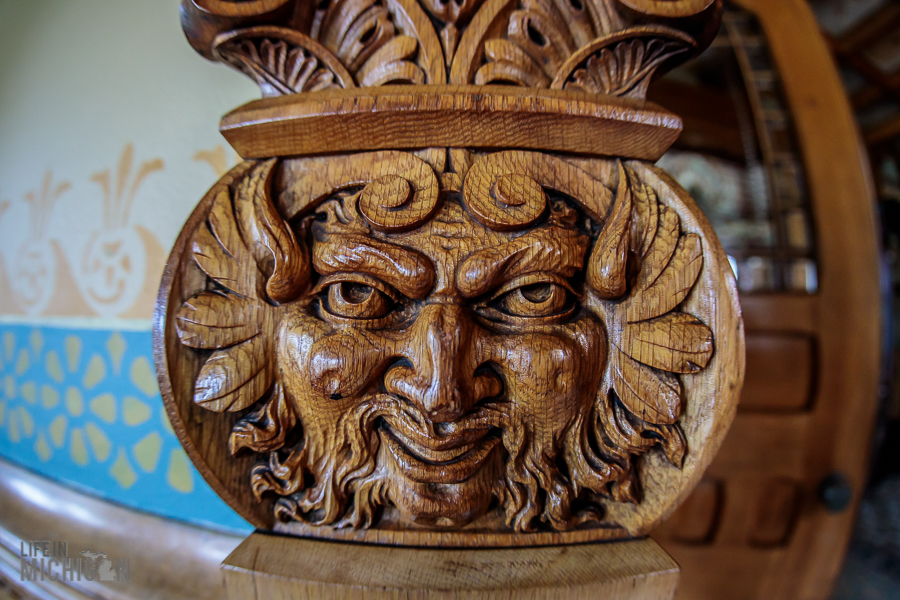
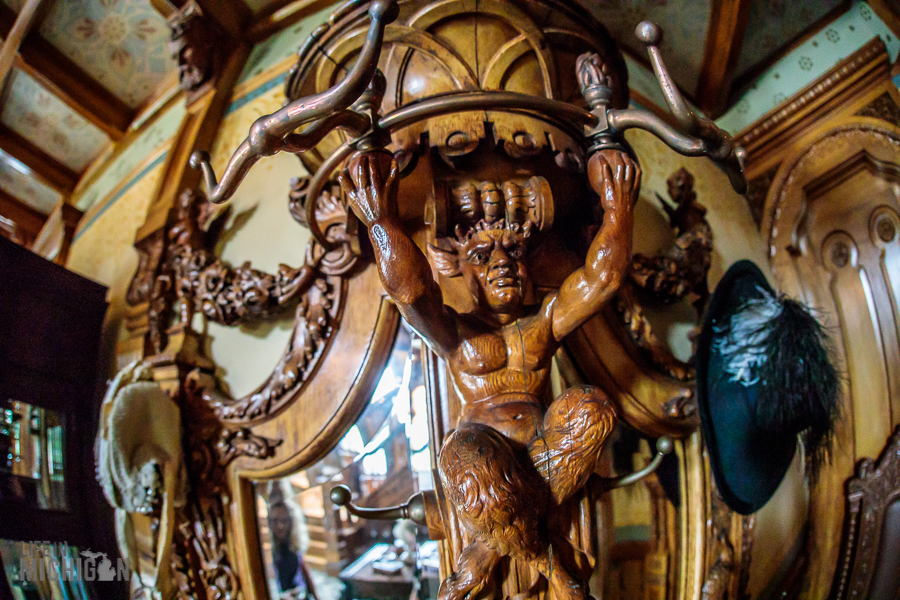
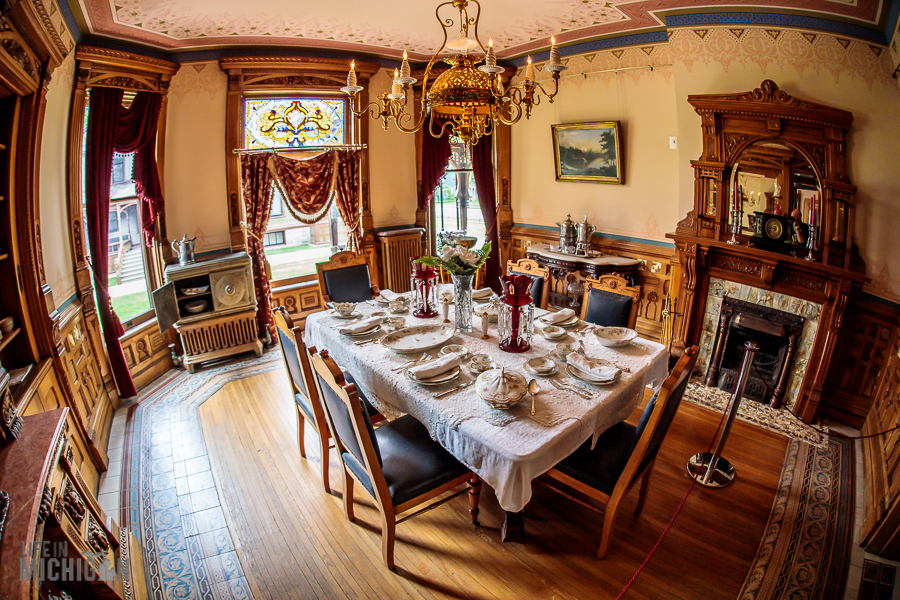
The Hackley and Hume Homes were built in 1888. While David S. Hopkins designed each home in a Queen Anne style, there are very different homes on the inside. As you wander the rooms of the Hackley home you are drawn in by the ornate carvings and fixtures. The Hume house is an equally beautiful home, yet has a more utilitarian feel. This could be because the Hume home was built to house a very large family with lots of kids.


We have the Hackley Heritage Association and the taxpayers in Muskegon to thank for restoring the Hackley and Hume homes to their current glory. The Hackley home was donated to the American Red Cross and they used the home until 1970. The Hume house became a daycare in the 1950s until being purchased by the Hackley Heritage Association in 1971. It took nearly 30 years and over 1 million dollars

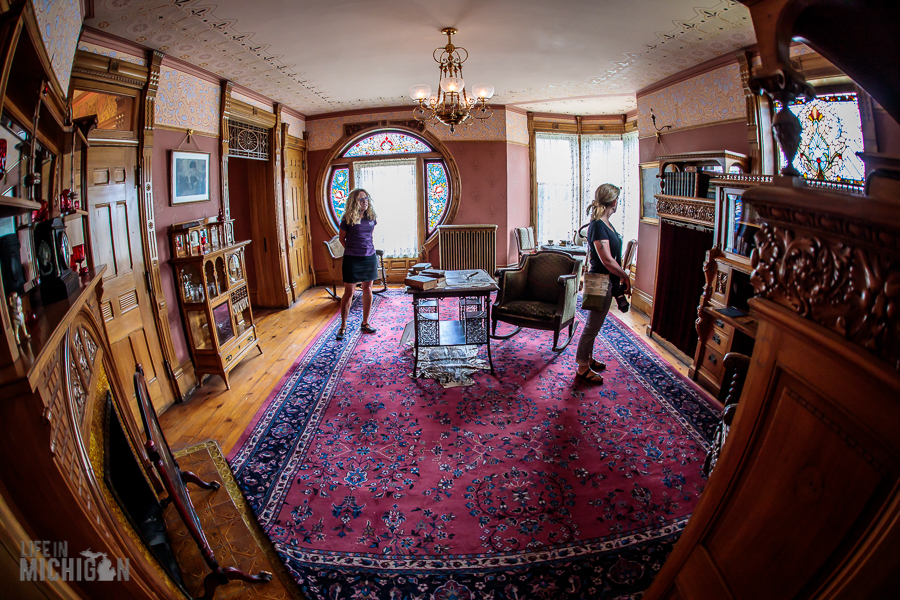
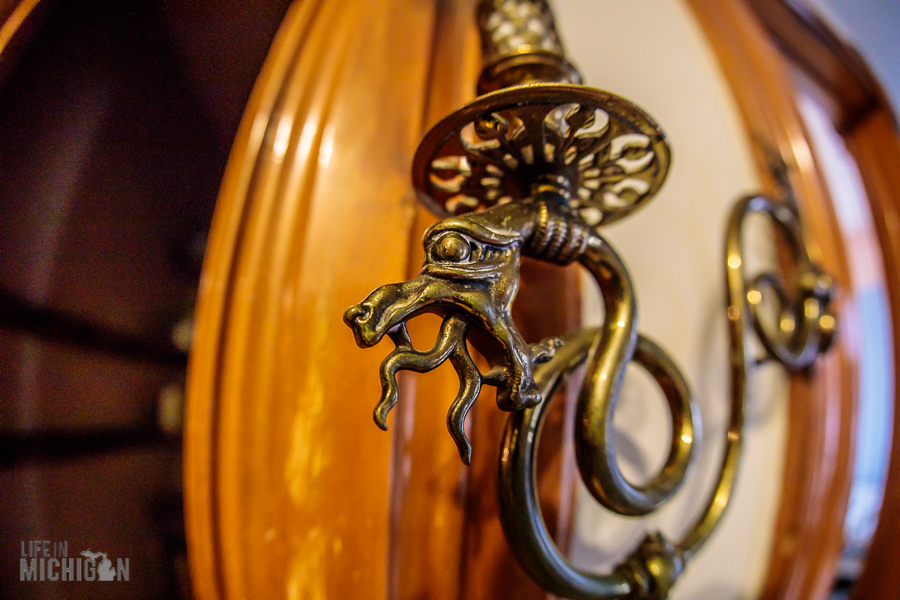
Visiting the Fire Barn Museum and Scolnik House
Just around the block from the Hackley and Hume homes is the Scolnik House and the Fire Barn Museum. Located at 504 and 510 W. Clay Avenue, you can easily walk from the Hackley estate to both of these fine museums. They are also part of the Lakeshore Museum Center.
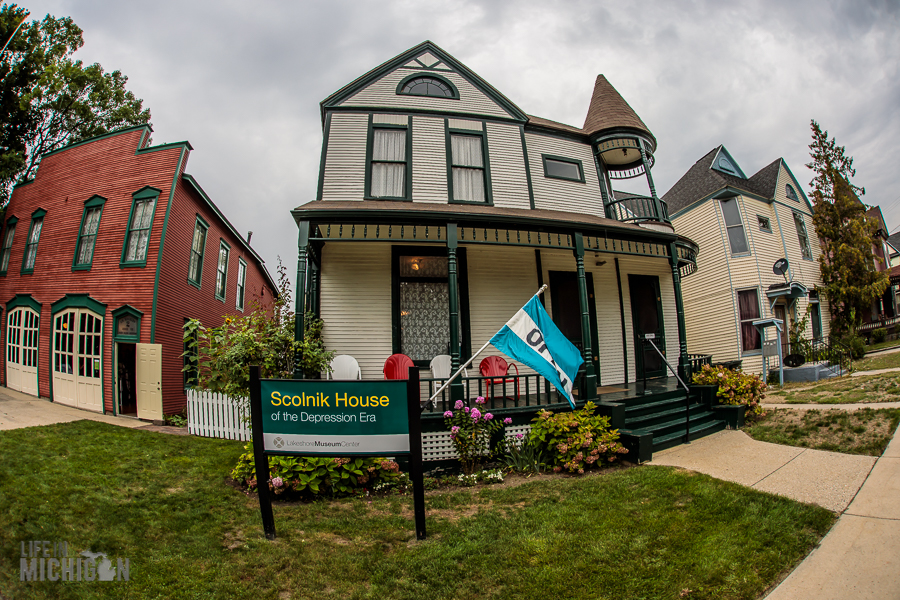
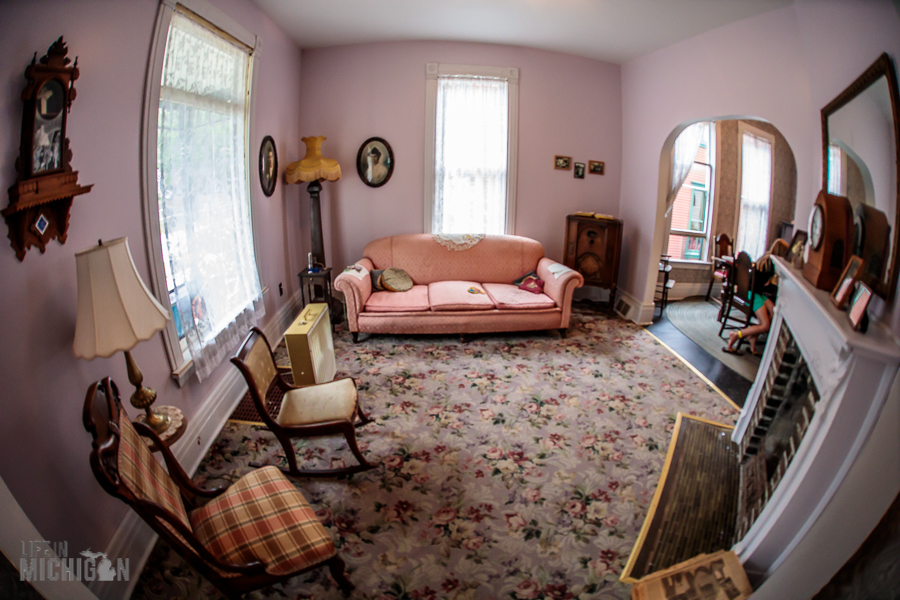
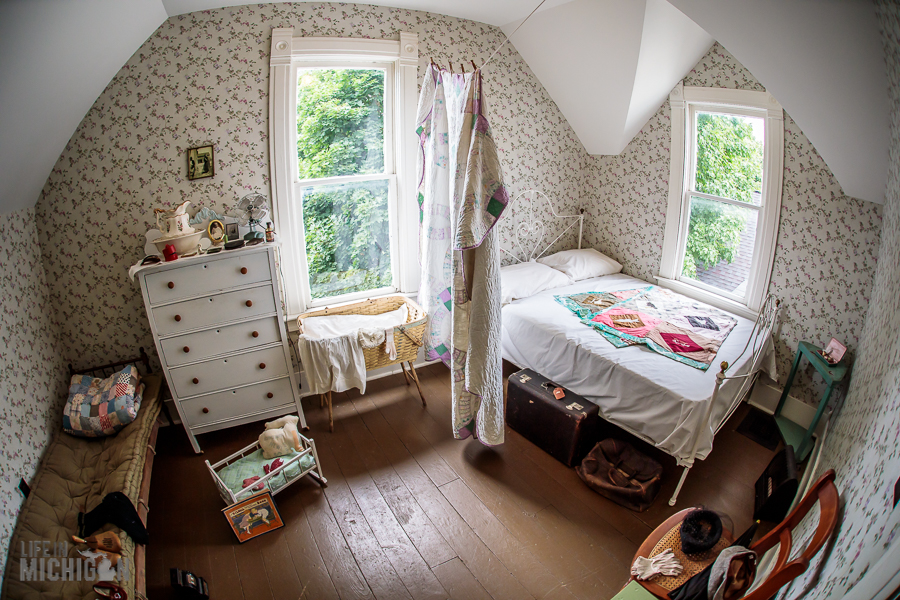
The Scolnik house is a restoration of a Great Depression Era home. Unlike the Hackley and Hume homes, you can touch some of the exhibits to get an added perspective and feel what life was like during the 1930s. Each room is filled with items that allow you to explore facets of life during that time period. There were friendly volunteers on hand to answer questions. Leafing through the old cookbook had me wondering just how deluxe the “Corned Beef de Luxe” really was.

Fire Barn Museum
Cross the yard from the Scolnik house to the Fire Barn Museum. This is a recreation of the first fire barn built in Muskegon in 1875. The C.H. Hackley Hose Company No. 2 shutdown in 1892. However, the recreation lets you get a glimpse of firefighting equipment of the time. On the second floor are the dorm room and a fire pole. Unfortunately, you can’t slide down it. There is a wealth of reading material throughout the museum to answer most questions. As with all the awesome Lakeshore Museum centers, there are volunteers on hand to help fill in the gaps or share a story.


History is far from boring and historical sites such as the Hackley and Hume Homes make it come alive. During your next trip to Muskegon, become amazed at the wonderful museums the city has to offer. When you have finished with those, then head over to the Michigan Heritage Park in Whitehall for an afternoon of historical adventures. Cap your day off with some great food and beer at Fetch Brewing. In the meantime, check out our gallery for more pictures.
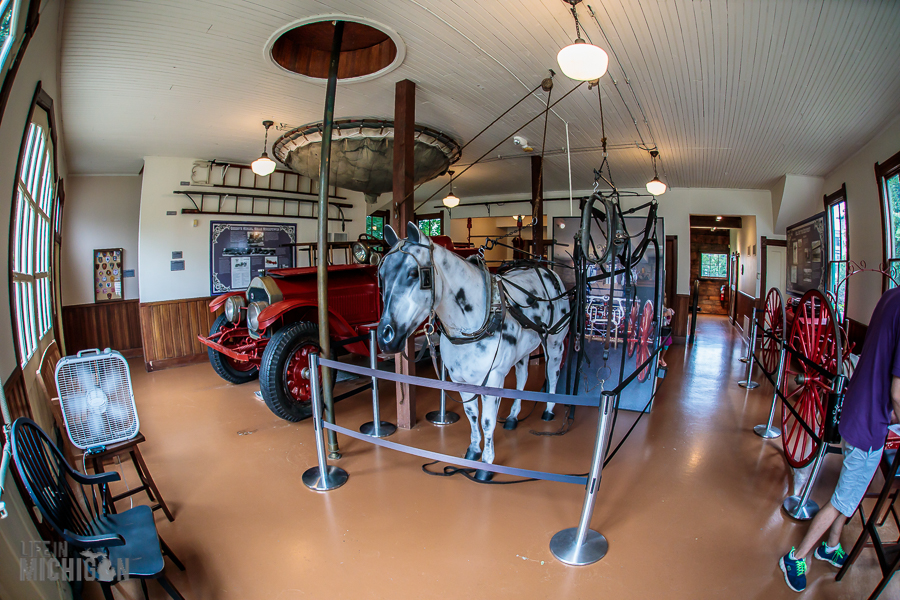
Become a Supporter!
Would you like your very own Life In Michigan t-shirt? Become a Patron! Patronage from people like you who enjoy our stories is what keeps Life in Michigan going strong. If you have the means, consider showing your support on our Patreon Page.
Share the News
If you enjoyed the story, then share it on your favorite social media venue or send it as a link to your friends and family. This is good for everyone!
Stay Connected
We’d really love it if you’d like our Facebook page. After you subscribe to our newsletter, Life In Michigan posts are delivered directly to your email box. You can also find us on Instagram. Cheers!

